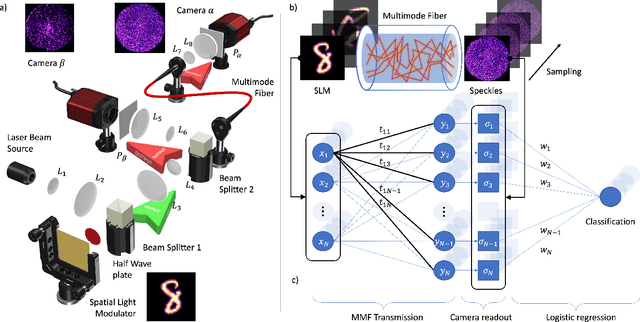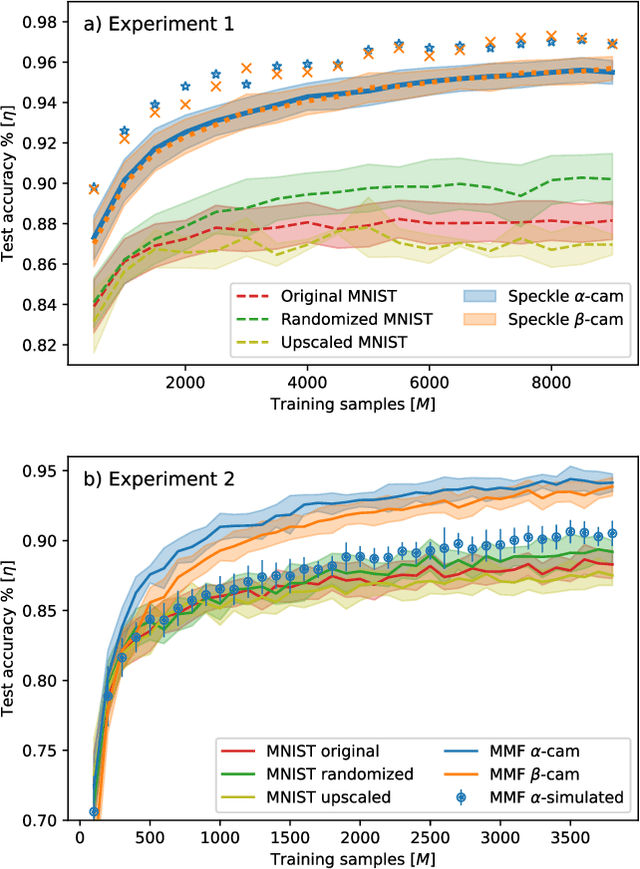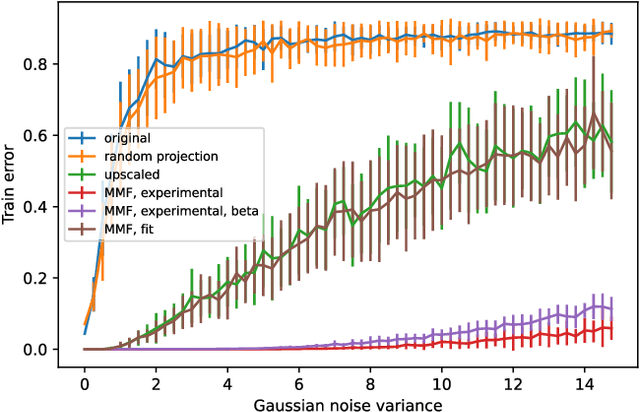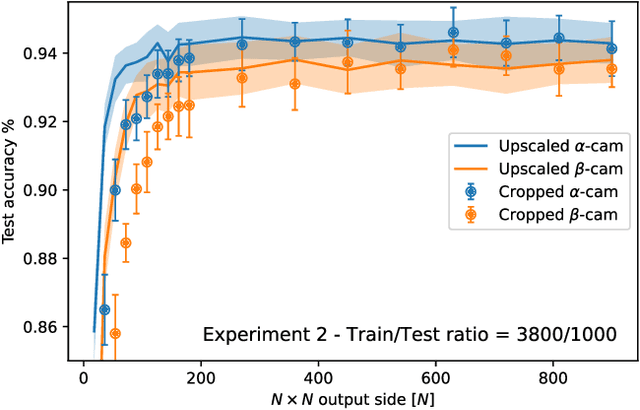Lorenzo Dominici
Multi-mode fiber reservoir computing overcomes shallow neural networks classifiers
Oct 10, 2022



Abstract:In disordered photonics, one typically tries to characterize the optically opaque material in order to be able to deliver light or perform imaging through it. Among others, multi-mode optical fibers are extensively studied because they are cheap and easy-to-handle complex devices. Here, instead, we use the reservoir computing paradigm to turn these optical tools into random projectors capable of introducing a sufficient amount of interaction to perform non-linear classification. We show that training a single logistic regression layer on the data projected by the fiber improves the accuracy with respect to learning it on the raw images. Surprisingly, the classification accuracy performed with physical measurements is higher than the one obtained using the standard transmission matrix model, a widely accepted tool to describe light transmission through disordered devices. Consistently with the current theory of deep neural networks, we also reveal that the classifier lives in a flatter region of the loss landscape when trained on fiber data. These facts suggest that multi-mode fibers exhibit robust generalization properties, thus making them promising tools for optically-aided machine learning.
 Add to Chrome
Add to Chrome Add to Firefox
Add to Firefox Add to Edge
Add to Edge